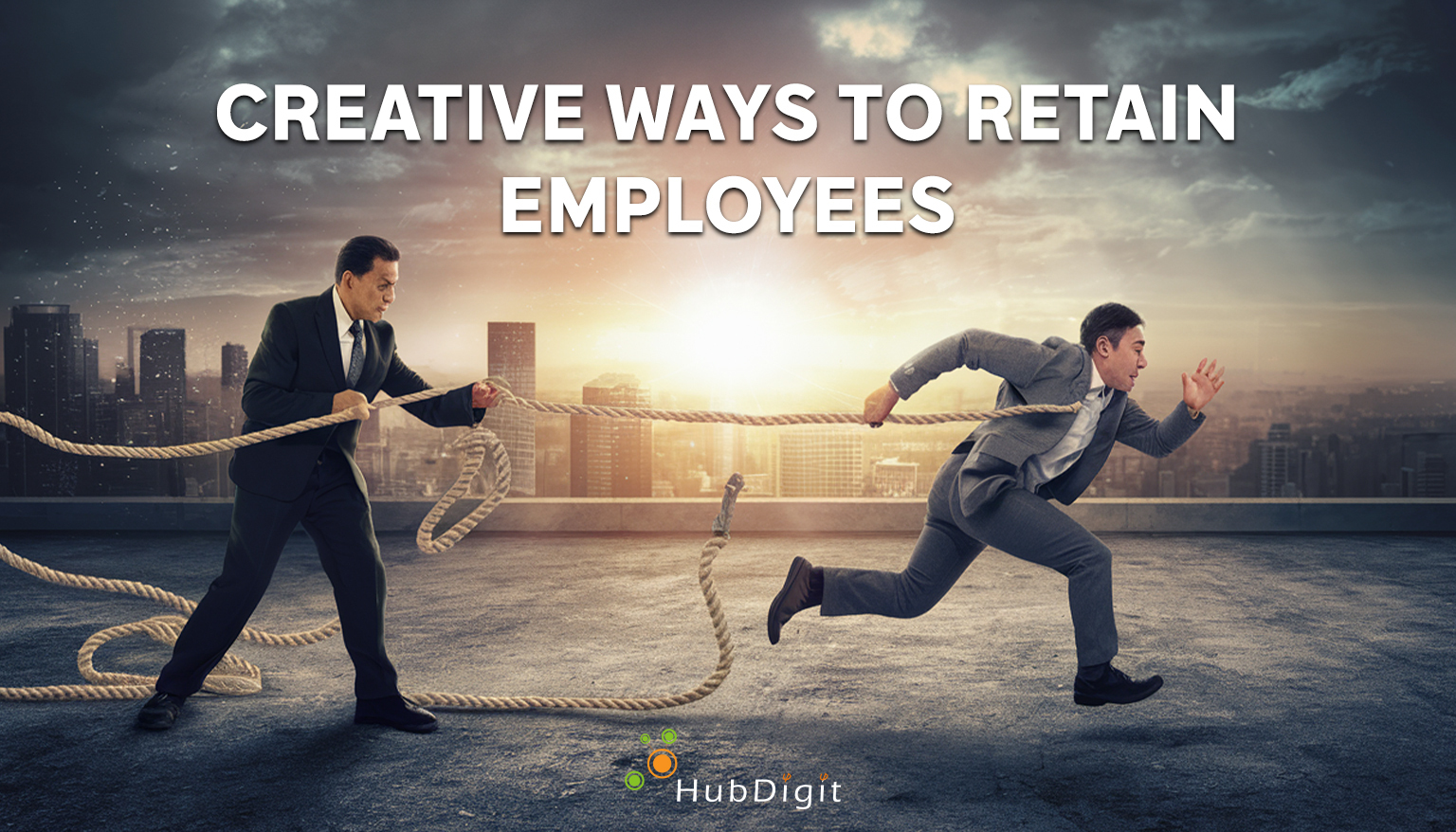
5 Creative Ways to Retain Employees
In this competitive job market, businesses must think creatively to retain top talent and maintain a thriving workforce.
This blog post will explore five innovative strategies to keep your employees engaged, motivated, and committed to your organization’s long-term success.
From personalized career paths to family-friendly policies, it’s time to supercharge your employee retention game!
Offer Personalized Career Paths:
Imagine being an employee who’s offered a one-size-fits-all career trajectory with little consideration for your unique talents, interests, and goals. Chances are, you’d feel uninspired, undervalued, and unsure about your future within the company.
This is where personalized career paths come into play, revolutionizing the employee experience and bolstering retention rates.
Personalized career paths provide employees with a clear direction and a vision for their future within the organization. This sense of purpose drives motivation, engagement, and loyalty.
It’s a dynamic approach to professional growth, empowering employees to carve out a journey that aligns with their aspirations and the company’s objectives.
Employees have the freedom to explore various roles and departments, keeping their work experience diverse and fulfilling.
Additionally, by providing tailored career development plans, mentorship programs, and cross-training opportunities, businesses demonstrate a genuine commitment to their employees’ success, which significantly influences retention rates.
Well-being initiatives
Well-being initiatives in the workplace are gaining prominence as organizations recognize the importance of promoting employee health, happiness, and work-life balance.
These initiatives aim to create a supportive environment that prioritizes employees’ physical, mental, and emotional well-being.
These programs can include on-site fitness classes, such as yoga or Pilates, providing employees with convenient opportunities to stay active and energized throughout the workday.
Additionally, meditation sessions or mindfulness workshops can help reduce stress, enhance focus, and promote mental resilience.
Mental health workshops and counselling services are also crucial components of well-being initiatives. By addressing mental health concerns and offering support, companies can foster a culture of openness and understanding while helping employees manage work-related stress and anxiety.
Apart from this, you can use other fun employee retention ideas to develop team chemistry.
Organizations can further demonstrate their commitment to employee well-being by offering healthy snacks and beverages, organizing wellness challenges, or providing access to health-tracking apps.
Implementing well-being initiatives in the workplace not only enhances employee satisfaction and retention but also boosts productivity, creativity, and overall organizational success.
In the process, companies can create a thriving work environment that nurtures a happy, healthy, and engaged workforce.
Family-friendly policies
Family-friendly policies play a vital role in fostering a supportive work environment and promoting employee loyalty.
By offering benefits such as parental leave, flexible work schedules, and on-site childcare services, companies can demonstrate their commitment to helping employees achieve a healthy work-life balance.
A real-life successful case study is the tech company Adobe, which offers generous family-friendly policies, including 26 weeks of paid parental leave, flexible work arrangements, and financial assistance for adoption or surrogacy.
As a result, Adobe consistently ranks as one of the best places to work and boasts high employee satisfaction and retention rates.
Organizations may also provide resources for new parents to help ease the transition back to work.
Additionally, hosting family-oriented events, such as company picnics or “bring your child to work” days, can create an inclusive atmosphere and strengthen employee bonds.
Foster a continuous learning culture:
A continuous learning culture is an environment that encourages and supports employees in expanding their knowledge and skills.
Organizations can foster growth, innovation, and employee satisfaction by promoting lifelong learning.
Amongst all the creative ways to retain employees, perhaps the most standout case was AT&T’s new approach to this old problem.
AT&T displayed their commitment to continuous learning through its “Workforce 2020” program, which has improved employee engagement and yielded significant financial benefits.
This initiative provides employees with access to online courses and resources, enabling them to develop new skills and stay competitive in their respective fields.
By investing in the professional development of its workforce, AT&T has cultivated a culture of growth and innovation, empowering employees to take charge of their careers.
This forward-thinking approach to talent management demonstrates the company’s dedication to fostering a skilled and dedicated team.
The success of the “Workforce 2020” program can be seen in its financial impact, as it reportedly saved the company $1 billion over five years.
These savings are a testament to the long-term benefits of promoting continuous learning within an organization, as employees who feel valued and challenged are more likely to remain committed to their employer.
Performance-based rewards:
The simplest answer to the question ‘How to retain talent? ‘is offering performance-based rewards to incentivize and recognize employees for their hard work, dedication, and contributions to the company’s success.
This reward system helps create a fair and motivating work environment that fosters growth and commitment.
Google exemplifies the impact of performance-based rewards through its “Googlegeist” system. By allowing employees to provide feedback on their colleagues’ performance, Googlegeist ensures a fair and transparent process for determining salary raises, bonuses, and promotions.
This innovative approach demonstrates the company’s commitment to valuing and acknowledging individual achievements.
Additionally, Google’s “Innovation Time Off” policy encourages employees to allocate 20% of their time to personal projects that potentially benefit the company while letting the employees explore their creative sides.
This strategy has led to groundbreaking developments such as Gmail and Google Maps, highlighting the power of nurturing a culture that values creativity and innovation.
